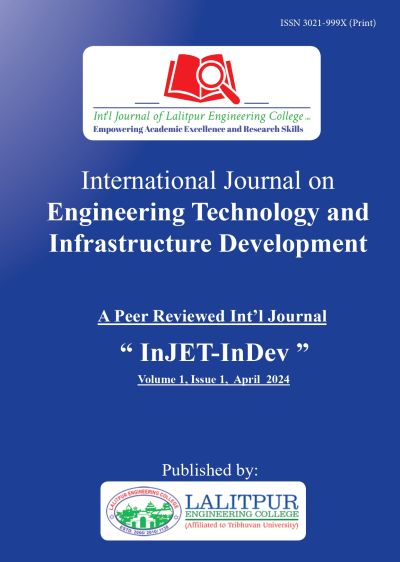Calibration of VISSIM Model for Urban Multilane Highways using Highway Capacity in Mixed Traffic Condition- A Case Study
DOI:
https://doi.org/10.3126/injet-indev.v1i1.67942Keywords:
VISSIM Model, Urban Multilane HighwaysAbstract
The present study illustrates the effectiveness of utilizing VISSIM software in evaluating the capacity of urban multi-lane highways under varied traffic conditions. Traffic flow and speed data from a section of Ratna Rajmarga's four-lane divided highway were used to establish a speed-flow relationship. This relationship was utilized to ascertain the field capacity. Subsequently, this data was inputted into VISSIM to generate a simulated speed-flow curve, which was then compared with the actual field curve. Results revealed that the original VISSIM model tends to overestimate both speed and capacity of the highway using default parameters. Previous research has highlighted standstill distance (CC0) and headway time (CC1) as significant influencing parameters in establishing the relationship between speed and volume. Therefore, in this study, these parameters were calibrated for an urban four-lane divided road. Initial assessments of CC0 and CC1 were carried out under homogeneous traffic conditions, focusing solely on one of the five vehicle types present for all vehicles. These findings were amalgamated to determine these parameters for a more representative mixed traffic scenario. Upon recalibrating the field data using the adjusted CC0 and CC1 values, the simulation-generated curve approached closer to the reliable limit for comparison with the field data curve. Consequently, it was utilized to determine the capacity, which was found to be less than 1 percent in comparison with the capacity determined by field data.
Downloads
Downloads
Published
How to Cite
Issue
Section
License
Copyright (c) 2024 International Journal on Engineering Technology and Infrastructure Development

This work is licensed under a Creative Commons Attribution 4.0 International License.
This license enables reusers to distribute, remix, adapt, and build upon the material in any medium or format, so long as attribution is given to the creator. The license allows for commercial use.




